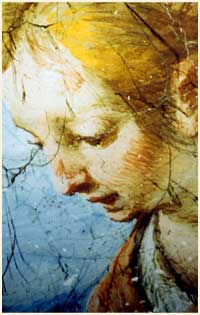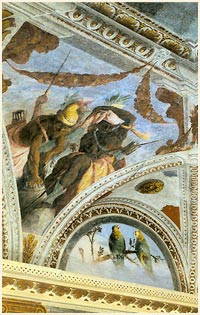Bernardo Strozzi, born in Genoa between 1581 and 1582, is one of the most representative and well-known painters. His education takes place locally: he works in some shops of Genoese painters, among whom Cesare Corte, and spends a period of time at a Sienese artist's studio, Pietro Sorri.
At the age of seventeen he becomes a Friar but, in 1609-1610, he gets an exemption which allows him to leave the friary, thus dedicating entirely to the painting.
He realizes plenty of paintings featuring various subjects and themes: a remarkable production of saints and religious scenes, though we can also find a good number of portraits and historical events paintings.
Bernardo dedicates also to the execution of frescos, much more lucrative than canvas, though just a few pieces are left. Therefore the findings at Palazzo Lomellino take on a more significant value.
1625 is an unlucky year: Strozzi is sued because of his paintworks, as they seem to be offensive for the strict principles of the Counter-Reformation Church. Facing the thirties of the Seventeenth century Bernardo, though unwillingly, is forced to leave Genoa, his native town. The clash of opinions and misunderstandings with the Minor Franciscan Order - which he belonged to and tried to leave exactly in 1630 to become Lateran Regular Canon and being more independent - were so many that he decided to leave.
On July 20th 1633 the artist addresses to the Council of the "Serenissima", pleading for a safeguard which could let him stay for some time in the city; his plead is accepted and Strozzi begins a new creative period. Venice loves his lively painting and offers him new job opportunities, from public and private commissioning.
Between 1639 and 1642 the artist sends to Genoa an altarpiece portraying "our Lady of the Assumption" for the chapel, whose construction was commissioned by Marco Centurione inside the church of the saints Tomaso and Domenico, nowadays destroyed; today the painting is preserved at the parish church of San Matteo in Laigueglia. It's one of the last canvas paintings of the artist, who during the last years of his life focuses mainly in the design of hydraulic engineering works, a vocation of his youth.
He dies in Venice on August 2nd, 1644.


